Friedrich Leopold Doldinger
December 2,1897, Radolfzell – September 2, 1973, Freiburg
From Die Gründer der Christengemeinschaft: Ein Schicksalsnetz, by Rudolf Gädeke
Translated by Rev. Cindy Hindes
From his ordination on September 16, 1922, Friedrich Doldinger worked as one of the most prominent personalities of the original circle. For more than fifty years, he was pastor in the congregation he founded in Freiburg im Breisgau and was Lenker of the congregations in Baden. None of the first four Lenkers and three Oberlenkers held office for so long. None of the other often-so-called original priests worked exclusively in one parish for more than half a century, from the very first day.
The sacraments of the Catholic Church instilled a special piety in Friedrich Doldinger as a child. Already as the first pupil in the class of the Realgymnasium, he proved his scientific abilities and his exact thinking; from childhood onwards, he lived actively in the arts, writing poetry, painting, and making music.
Religion, science, and art lived in unique harmony in him. He was, however, not without powerful obstacles due to his descent from a Catholic-Alemannic family, his extremely fine sensitivity, and a persistently very weak constitution. He was a man both revered and controversial as hardly any of his colleagues. He still lives clearly in the memory of many people: a medium-sized figure, fine limbs, a splendid head, usually tilted slightly to one side and a little forward, as if listening, a pained smile, a gaze at once penetrating and yet as if dreaming. In earlier years, he was always mistaken for a girl, or a woman.
He was hardly ever seen without a scarf around his neck, at any time of the year, and rarely without a cap on his head, like the ones motorcyclists used to wear. Once he had pulled it off with an energetic gesture, his hair stood out like flames in all directions. The first five decades of The Christian Community’s life were shaped by him in a special way.
Their third son, Friedrich Leopold was born to the Catholic postal clerk couple Willibald and Walburga Doldinger. He grew up with his two older brothers, Alfred and Walter. As a child, he regularly went to church and then to the lake with a view over to the island of Reichenau. Later he wrote about the end of his 14th year: “… that everything traditionally ceremonial without the content of the good spirit is repugnant to me. I realized this at the age of fourteen when I turned away from the Catholic Church”.
He ruptured his lung while swimming. As a result, he had to miss school for half a year. Later, he had a gymnastics accident.
His father was transferred to Freiburg in Breisgau. There, Friedrich attended the Realgymnasium and found, to his own surprise, that he was usually first in his class and also ‘very good’ in painting. He read a lot and was an avid user of the town library. He was particularly impressed by the sagas of the gods, the Germanic heroic sagas, and the Edda. He did much of this reading in seclusion on the grounds of the “Old Cemetery.” Through a woman friend who gave him a picture of the Sistine Madonna and one of Michael fighting the dragon, the sixteen-year-old had his first contact with anthroposophy in 1913. Mrs. Woebken took him to Stuttgart for a lecture by Rudolf Steiner, where Friedrich Doldinger was also introduced to him. However, he did not like the lecturer’s energetic manner of speaking.
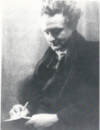 A heart defect saved him from military service in the First World War. Ever since his confirmation, he had fainting spells and attacks of weakness, such that he fell down as if lifeless. Breathing exercises increased such conditions even more. He had to stay away from school for three-quarters of a year. How he loved the holiday visits to relatives in Radolfzell and Überlingen am See and the visits to Uncle Alfred, who was a district court judge in Karlsruhe and once showed him Rudolf Steiner’s Occult Science with the remark: “Nonsense personified.”
A heart defect saved him from military service in the First World War. Ever since his confirmation, he had fainting spells and attacks of weakness, such that he fell down as if lifeless. Breathing exercises increased such conditions even more. He had to stay away from school for three-quarters of a year. How he loved the holiday visits to relatives in Radolfzell and Überlingen am See and the visits to Uncle Alfred, who was a district court judge in Karlsruhe and once showed him Rudolf Steiner’s Occult Science with the remark: “Nonsense personified.”
At eighteen, he passed an external Abitur in Ettenheim with an excellent essay, the subject of which we, unfortunately, do not know. Now he felt more free. His parents and brothers did not look too favorably on his ambitions. He read anthroposophical books! How To Know Higher Worlds? and the Mystery Dramas! Why hadn’t this been given to him earlier? That was something for his artistic soul. He met Mrs. Anna Wolffhügel with her three children, whose husband, later a Waldorf teacher, was in the field.
In the winter semester of 1916/17, he began his studies, which he completed exclusively in Freiburg for health reasons, as he was always ill to the point of endangering his life and dependent upon his mother’s care. He absorbed knowledge from experimental physics to literature and philosophy to musicology.
In 1921, he wrote his doctoral thesis in literature: Die Jugendentwicklung Friedrich Heinrich Jacobis bis zum Allwil-Fragment in ihrer Beziehung zur Gesamt-Entwicklung [The Development of Friedrich Heinrich Jacobi’s Youth up to the Allwil-Fragment in its Relationship to the Overall Development]. It was highly acclaimed by Edmund Husserl. His second subject was musicology.
It is still to be reported from the years of study that Friedrich Doldinger had to stay in Munich for several months in 1918 in order to undergo treatment by Marie Ritter, the inventor of the ‘Ritter Mittel.’ During this time he met Albert Steffen, Ernst Uehli, Otto Graf Lerchenfeld, Frau Harriet von Vacano and, in Breitbrunn am Ammersee, Margareta Morgenstern and Michael Bauer. All were well-known members of the Anthroposophical Society at that time.
In the following year, he was already actively involved in Freiburg through lectures and discussions to spread the idea of the threefold social order. He published works in the Waldorf Nachrichten (e.g. “Hubertus,” Volume II, p. 416, or “Der Sänger,” Volume III, p. 160).
Then his study and reading evenings formed the center of a circle that later became a local group of the Anthroposophical First Class work. He himself did not speak much, was mostly silent, and always seemed somewhat embarrassed; he liked to play something on the piano or recite poetry. But he could also forcefully express his views — he called himself an uncomfortable “truth-teller” — which won him many admirers and some opponents.
In May 1920, Johanna Otto, his future wife, met him for the first time in this circle. We have a detailed chronicle of his life from her (privately duplicated). According to her own judgment, she was an “absolutely emotional person.” “He was spirit – I was pure soul.” She was his ardent admirer, fifteen years his senior, energetic and caring. Her husband gave Doldinger money, a bicycle, and a typewriter. She was, as she herself writes, always ill, irreligious, and melancholic to depressive. They went on a short trip to Lake Constance together, both as if dreaming.
In the autumn of 1920, the first anthroposophical First Class course took place in Dornach to mark the opening of the Goetheanum building. Of course Friedrich Doldinger was there. Johanna also traveled with him. It was the colored windows in the building and the eurythmy that most captivated Friedrich Doldinger.
In 1921 his doctoral thesis was finished, typed by Johanna. Friedrich Doldinger published his first essay in the newly founded journal Die Drei on the “Weg zur Wirklichkeit bei Goethe und Steiner” (The Path to Reality in Goethe and Steiner) and edited the verse epic by Julius Mosen “Ritter Wahn” with his own introduction at the publishing house Der Kommende Tag.
At that time, Tom Kändler, a theology student from Tübingen, visited him in Freiburg in the summer and told him about the preparations for work on religious renewal and the first course (June course) that Rudolf Steiner had just held. This would be continued in the autumn. Rudolf Steiner himself had drawn attention to Friedrich Doldinger and thought he should be invited.
From the ‘Autumn Course’ in 1921 on, Friedrich Doldinger was a member of the founder’s circle. It was difficult for him to explain his professional will to his parents: But he was always able to go his own way. He was not a fighter but an absolute individualist.
From Dr. Hermann Heisler’s financial collections, each founder was to be paid three thousand marks to start work. The value of the money dwindled daily due to inflation.
In Breitbrunn am Ammersee the circle stayed as guests of Michael Bauer and Margareta Morgenstern. They met daily in an empty cowshed to prepare for the foundation in Dornach. Friedrich Doldinger sat in the sun at the open door under an umbrella and took notes. Even then, he seemed to some like a figure from Spitzweg’s pictures. Was he actually listening to the discussions? His paper on the Templars, however, quickly dispelled the impression of a dreaming poet.
Then they sailed together across the Ammersee, then across Lake Constance into Switzerland to Dornach. Rudolf Steiner received the circle and helped it to form itself as a priesthood of the consciousness soul age. This included the new kind of hierarchy of the community, and through his advice, Doldinger was acknowledged as one of the first four Lenkers.
In Freiburg, after the founding days in Dornach, all the preparations were made; a room was rented, a circle of people was officially confirmed as the first members before the Act of Consecration could be celebrated on December 3, 1922.
 The Freiburg Community Chronicle and the records of Johanna Doldinger describe in detail the development of community life year by year. Friedrich Doldinger immediately began to travel in his area of influence, which included Baden and Switzerland. He held lectures and musical-poetic celebrations throughout the area. From a distance, he witnessed the Goetheanum fire on New Year’s Eve 1922/23. During the 1923/24 Christmas Conference, he was present in Dornach as far as his priestly duties allowed. Friedrich Doldinger had done much for the Anthroposophical Society. Rudolf Steiner is said to have asked him if a house for the Anthroposophical Society together with The Christian Community could be built in Freiburg.
The Freiburg Community Chronicle and the records of Johanna Doldinger describe in detail the development of community life year by year. Friedrich Doldinger immediately began to travel in his area of influence, which included Baden and Switzerland. He held lectures and musical-poetic celebrations throughout the area. From a distance, he witnessed the Goetheanum fire on New Year’s Eve 1922/23. During the 1923/24 Christmas Conference, he was present in Dornach as far as his priestly duties allowed. Friedrich Doldinger had done much for the Anthroposophical Society. Rudolf Steiner is said to have asked him if a house for the Anthroposophical Society together with The Christian Community could be built in Freiburg.
On May 8, 1924, Hermann Beckh officiated at the wedding of the Doldinger couple.
Rudolf Steiner asked him by telegraph to hold the funeral of his collaborator Edith Maryon in Basel on May 6, 1924. When Friedrich Doldinger enquired by telephone about the course of events, he received the clarifying reply: “You perform the rite for the deceased; the rite must precede; and then I come and speak of the special circumstances of her life, which in this case were anthroposophical.”
The autumn weeks of 1924 brought the culmination of Rudolf Steiner’s lecturing activities. Friedrich Doldinger took part in everything: Drama Course, Karma Lectures, Classes at the School, Apocalypse Lectures for the Priesthood, Pastoral Medicine Course. Johanna Doldinger was accepted by Rudolf Steiner into the School: “You are the lady who creates The Christian Community together with Doctor Doldinger in Freiburg; continue to be a worthy member of the Society!”
Rudolf Steiner died on March 30, 1925. The Doldinger couple attended the funeral service in the hall of the carpenter’s workshop, which included a composition by Friedrich Doldinger.
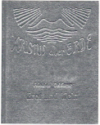
Christ of All Earth, vol. 13, 1925
He earned great merit for the movement as a whole from 1923 onwards, when he published a series of small volumes under the title Christ of All Earth, with his own single volume design, which announced the spiritual-pious attitude that The Christian Community wanted to generate. With thirty-nine titles by 1940, these writings went out into the world by the tens of thousands and found their receptive readers. In the journal Tatchristentum, which after a year was called The Christian Community, he was involved with contributions from the beginning. Many other writings were created by him, well over thirty works. But it was as a speaker and festival organizer that he was most effective until his old age.
The large conferences were an important element in the early days of The Christian Community. Friedrich Doldinger was involved in almost all of them. In 1926 he himself organized a conference in Freiburg with the theme “Christ – Gospel – Church.” Doldinger always performed dramatic scenes he had written and rehearsed himself, played his own compositions, and showed paintings; artistic activity was the element that inspired many people around him to join in. He loved improvisation, not only on the piano but also in drawing, making small things out of any material but also in speaking, and performing. Most of what he created and did was done on the spur of the moment. Only conferences and journeys were planned in the long term.

“Gloria” one of hundreds of Freidrich Doldinger drawings
His wife was a strict judge. After a lecture, she could audibly call from the back row: “Friedrich, that was cultural salad.” But she was also his constant companion.
Gottfried Husemann was somewhat involved in Doldinger’s Freiburg congregation during a convalescence period in 1927/28. The two were very similar in many ways: outwardly often sickly, spiritually open and stimulating, very musical, but with an easily offended sensibility. One was a choleric Westphalian, the other a melancholic, gruff Alemanni. One can guess how difficult it was for the two of them to live with each other throughout their lives. For both, the spontaneous personal will for freedom took precedence over all the necessary order of a community.
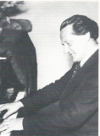 Doldinger had a hard time with ‘Stuttgart,’ with the movement leadership, to which he himself belonged. It was not in him to hold meetings or attend conferences, although he took his leadership responsibility very seriously. He had to be effective himself and did so intensively for fifty years. For him, the source was the lived unity of knowledge, art, and religion. When he once thought it necessary, he wrote to all his colleagues: “If a strong and heartfelt devotion to anthroposophy were cultivated among us, exhortations to conscientiousness would be superfluous, as would the need for slogan-like declarations of will.”
Doldinger had a hard time with ‘Stuttgart,’ with the movement leadership, to which he himself belonged. It was not in him to hold meetings or attend conferences, although he took his leadership responsibility very seriously. He had to be effective himself and did so intensively for fifty years. For him, the source was the lived unity of knowledge, art, and religion. When he once thought it necessary, he wrote to all his colleagues: “If a strong and heartfelt devotion to anthroposophy were cultivated among us, exhortations to conscientiousness would be superfluous, as would the need for slogan-like declarations of will.”
He was allowed to travel extensively: In 1937, three months in Finland, earlier stays in Italy, then France with Paris and Chartres, and later, after the war, several times in Sweden and England. He loved to travel, despite all his settledness in Freiburg. As early as 1931, he was given a tiny car for his business trips. He always had friends and patrons but suffered greatly from those who were not well-disposed towards him.
From 1936 onwards, the ‘Midwinter Week’ in Freiburg and the days around the Day of Repentance and Prayer in Bremen were part of his fixed annual schedule. After the war, the meetings at the Hardthof on Lake Bonn were added. He cultivated all these activities over the decades.

Facsimile of Doldinger’s Memorandum 1922
When The Christian Community was banned in 1941, he registered with Professor Weismann to study composition and piano playing. He gave piano lessons and had more than twenty students. During the war, he wrote his Mozart book, which ran into six editions and has been reprinted by a renowned publisher. “I worked through a solid meter of literature for it!” he had commented on it.
Of his compositions, the Good Friday music, the ‘Kassel music,’ the choirs, especially the baptismal choir, the string quartets, and the songs and movements for the Act of Consecration must be remembered.
After the war, 1948-1950, the small construction of a church was possible on Goethestraße 67a, where the congregation regrouped after the time of the war and had its center for decades. It is unforgettable how Friedrich Doldinger improvised on the harmonium before the service!
Still to be mentioned are the two North German Conferences in the summer of 1949 at Sternberg Castle/Lippe and in 1950 at Schloss Vahrenholz on the Weser, which made it possible for a larger circle to experience his works and the intensive life of the Bremen community and its youth circle with Friedrich Doldinger.
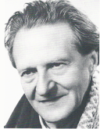 More than two decades of intensive work followed. This is a miracle in view of his persistently weak health, and only possible because of the glowing fire in his spirit and will that he forged. In his old age, many smiled at him as an oddball. It was not easy for colleagues who nevertheless, needed to work with him.
More than two decades of intensive work followed. This is a miracle in view of his persistently weak health, and only possible because of the glowing fire in his spirit and will that he forged. In his old age, many smiled at him as an oddball. It was not easy for colleagues who nevertheless, needed to work with him.
It will certainly take some time before we rediscover much of Friedrich Doldinger’s work. However, there was one quality he had that everyone experienced: humor! At the beginning of a lecture during a conference in Hamburg—the hall was merely partitioned off in an exhibition hall— it was loud. People shouted for him to speak louder; he replied: “I don’t speak louder; you have to be quieter.” He is said to have once preached to his confirmands: “One gets by in life with relatively few sins. Yes, so be it.”
He died on September 2, 1973, after a life full of physical and mental suffering, from which he always extracted a transfiguration that shines in the words: “Christ of All Earth.”

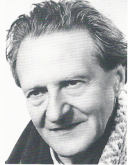

Leave a Reply
Want to join the discussion?Feel free to contribute!